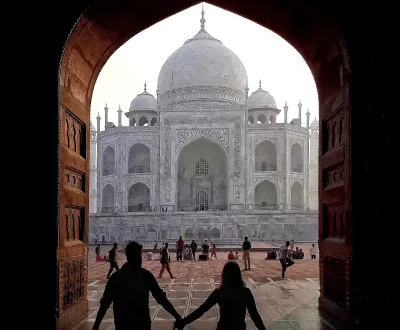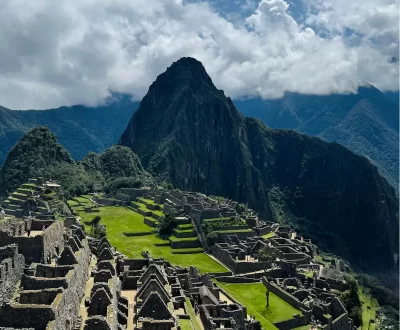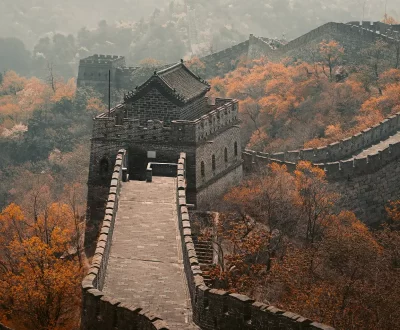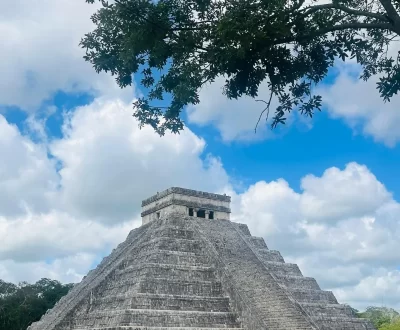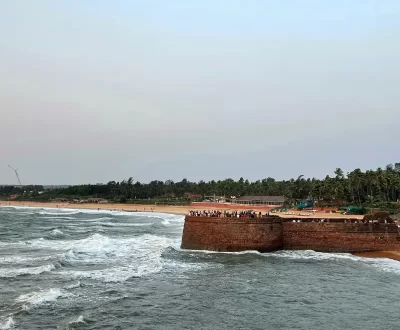
The Colosseum in Rome is the biggest amphitheater ever built and one of the most famous building in Rome, Italy. It shows how well Romans could build things. For almost 2,000 years, people have come to see this beautiful building. It is a sign of the Roman Empire’s strength and architectural skill.
This ancient architectural wonder has always been on my bucket list.
The Flavian Dynasty and the History of Construction
Emperor Vespasian started building on the site of Nero’s fake lake in 70–72 AD. This was supposed to take the tyrant’s private luxury and turn it into public entertainment. The money for the project came from the treasures taken from the Jewish Temple after the Siege of Jerusalem in 70 AD.
In 80 AD, Emperor Titus finished the building and dedicated it with amazing games that lasted for 100 days. In 82 AD, Emperor Domitian finished the design of the amphitheater by adding the fourth story and the underground hypogeum system.
A marvel of architecture and engineering
The Colosseum in Rome is 620 by 513 feet (189 by 156 meters) and almost 50 meters tall. It was a huge building that people in ancient Rome could see from all over. This freestanding marvel, on the other hand, used complicated barrel vaults and groin vaults to hold it up.
There are three levels of arcades on the outside, and each one is framed by columns in a different style: Doric, Ionic, and Corinthian. For hundreds of years, this arrangement influenced the design of buildings and became the basis for Renaissance architectural ideas.
Gladiatorial games and shows for fun
The arena was the site of thousands of gladiator fights, hunts for wild animals, and other big public events that Romans enjoyed. These games had political goals because they let emperors show how generous they were and keep the public’s support by giving them free entertainment.
Roman engineers showed off their skills by flooding the arena floor with fake naval battles (naumachiae) from time to time. These fights were also a fun way to spend time. Most people think that early Christians were killed in the Colosseum, but it’s still not clear if they were.
Advanced ways to control crowds
The Colosseum in Rome could hold about 50,000 people, and advanced crowd control systems made sure that people could get in and out quickly. Numbered arches matched up with ticket sections, which made it possible to keep the crowd from getting too big by arranging seating in a certain way.
A huge retractable awning system (velarium) kept people dry and safe from the sun. Hundreds of Roman sailors worked this complicated rigging system from corbels in the top story, which shows that they cared about making the crowd comfortable.
Hypogeum and Beast Elevators in the Ground
Domitian’s underground hypogeum was a complicated network of tunnels, rooms, and machines that ran under the arena floor. Gladiators, wild animals, and stage equipment that made dramatic entrances to the arena lived in this underground maze.
Trapdoors that opened up unexpectedly added to the drama of the show by letting animals and fighters up to the arena level. These mechanical improvements showed how good Roman engineers were at making fun things.
The order of people and where they sit
Seating arrangements showed how strict the social order was in Rome. Senators sat in the best seats at the ring, while regular people sat in the upper tiers. The emperor’s box had the best views and showed how much power the emperor had over the games.
People from different social classes could only use certain doors to get into the building. This kept social order even during entertainment events. This way of organizing things had an impact on how amphitheaters were built throughout the Roman Empire.
Changes and Decline in the Middle Ages
After the fall of Rome, the Colosseum in Rome was used for a lot of different things, like a place to live, a workshop, a place for religious orders to live, and a fortress for rich Roman families. The Frangipane and Annibaldi families owned the building in the Middle Ages.
Lightning strikes and earthquakes damaged the building, and taking stones out of it for other building projects slowly took away its original beauty. People mostly went to the site to get building materials for more than 1,000 years.
Conservation and Restoration Right Now
In the 1800s, Pope Pius VIII began serious efforts to protect the Colosseum because they knew how important it was to history. A big restoration project in the 1990s fixed structural problems and made the monument ready for more visitors, this was a welcome step, more & more ancient sites of significance should be improved.
Today’s conservation finds a balance between keeping the past and making it available to the public, so that future generations can enjoy this architectural masterpiece. Ongoing maintenance takes care of pollution, damage from the weather, and the effects of tourism on the old building.
The Effects of Culture and Tourism Today
The Colosseum is the most popular tourist spot in Rome, millions of people visit each year. There are regular exhibits that look at ancient Roman culture, and there are also educational programs that bring the building’s history to life for people of all ages.
The Colosseum is a great symbol of Roman culture. The monument has a much bigger impact than just being in Rome because of its past significance.
“The Colosseum in Rome is still the best amphitheater that people have ever built. It shows how smart Roman engineers were and how advanced their entertainment was. It changed architecture for thousands of years. This beautiful building still inspires architects, historians, and visitors, and it also gives us a real connection to the ancient Roman civilization. There are many reasons why people like the Colosseum, such as its unique design, its historical significance, and its cultural impact. It is a unique look at how big and complicated the Roman Empire was.
Looking for hotels near the Colosseum in Rome
Want to complete your journey to 7 seven wonders of the world, then do check out Machu Picchu in Peru
Disclaimer
Please note that the facts ,historic details & other details have been sourced from the internet and this article is only for knowledge purposes & not to be used for any unofficial or official purposes. You should rely on your own research.
More from our blog
See all postsRecent Posts
- Places to visit in Varkala 3 September, 2025
- Taj Mahal the Monument of Love 3 September, 2025
- Lost City of the Incas Machu Picchu Peru 3 September, 2025


